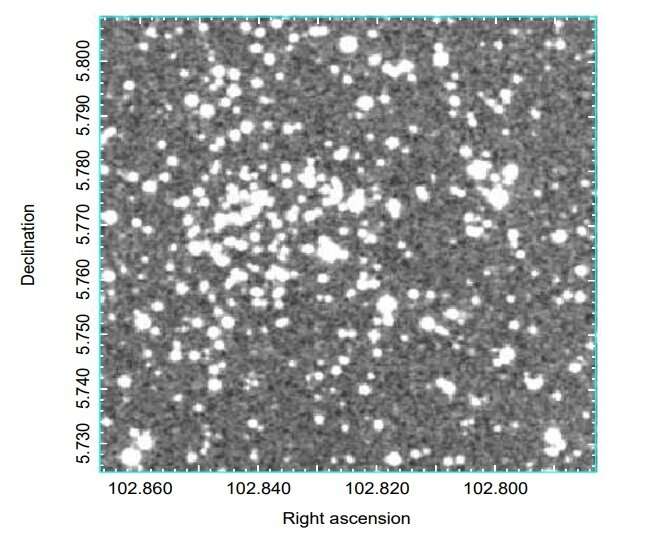September 29, 2022 report
Open cluster Berkeley 27 examined by researchers

Using data from ESA's Gaia satellite, astronomers from Taiwan and India have inspected a galactic open cluster known as Berkeley 27. Results of the study, published September 22 on the arXiv pre-print repository, yield essential information regarding the properties of this cluster.
Open clusters (OCs), formed from the same giant molecular cloud, are groups of stars loosely gravitationally bound to each other. So far, more than 1,000 of them have been discovered in the Milky Way, and scientists are still looking for more, hoping to find a variety of these stellar groupings. Expanding the list of known galactic open clusters and studying them in detail could be crucial for improving our understanding of the formation and evolution of our galaxy.
Berkeley 27 (or Be 27 for short) is a poorly populated intermediate-age open cluster located in the Milky Way's third quadrant towards the galactic anticenter region. Its age is estimated to be about 2 billion years and its metallicity was found to be at a level of 0.03. However, many properties of Be 27 are still unknown and its stellar content remains poorly studied.
That is why a team of astronomers led by Devesh P. Sariya of the National Tsing-Hua University in Hsin-Chu, Taiwan, have analyzed the Gaia Data Release 3 (DR3) to investigate Be 27. First of all, they used the precise proper motions from DR3 to determine the membership status of the stars.
"We presented a study of intermediate-age open cluster Be 27 using the Gaia-DR3 data. Gaia PMs [proper motions] were used to determine the most probable cluster members," the researchers wrote in the paper.
The astronomers managed to identify 131 most probable members of Be 27, which are also lying within the limiting radius of the cluster. The limiting radius of Be 27 was calculated to be 3.74 arcminutes, using the radial density profile. The cluster's mean proper motion was determined to be −1.076 and 0.152 mas/year in right ascension and declination, respectively.
The study detected two blue straggler stars (BSSs) in the central region of Be 27 (within 0.5 arcminutes). It was noted that presence of such objects in a stellar system is a symbol of a "delayed" evolution for certain stars. The distance to Be 27 was estimated to be some 15,600 light years while the cluster's age was updated to be approximately 2.29 billion years.
The researchers also evaluated the galactic orbits and orbital parameters for Be 27 using potential galactic models. They found that this cluster is orbiting in a boxy pattern outside the solar circle and traced the circular path around the center of the Milky Way.
According to the authors of the paper, the results suggest that the birth position as well as the present day position of Be 27 is in the thick disk of our galaxy. Hence, the cluster should have had a minimal interaction with the galactic thin disk.
More information: Devesh P. Sariya, Ing-Guey Jiang, D. Bisht, R. K. S. Yadav, G. Rangwal, A Gaia based analysis of open cluster Berkeley 27. arXiv:2209.11072v1 [astro-ph.GA], arxiv.org/abs/2209.11072
© 2022 Science X Network




















